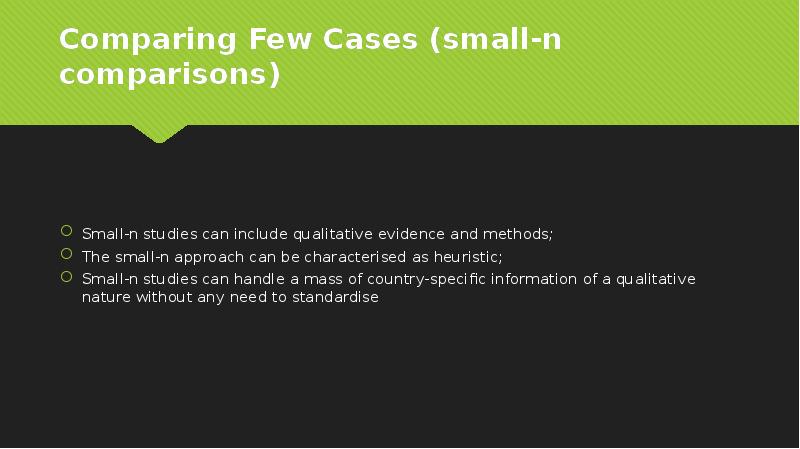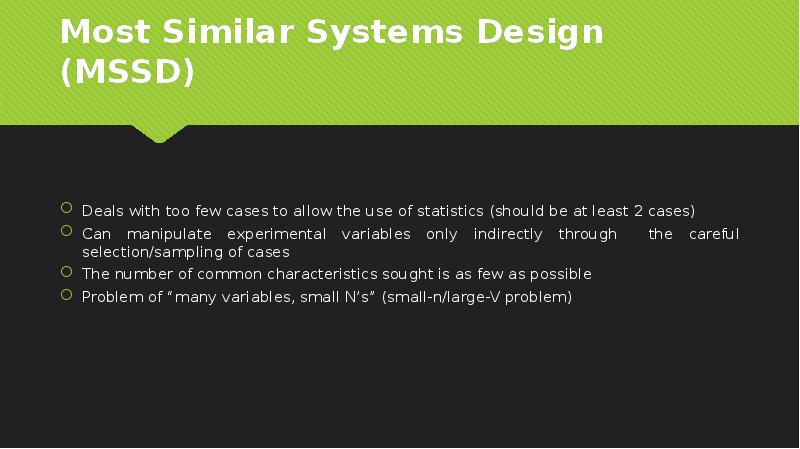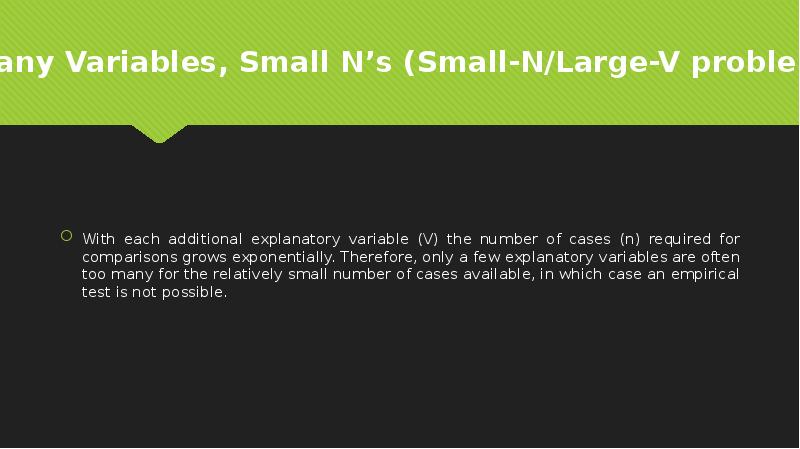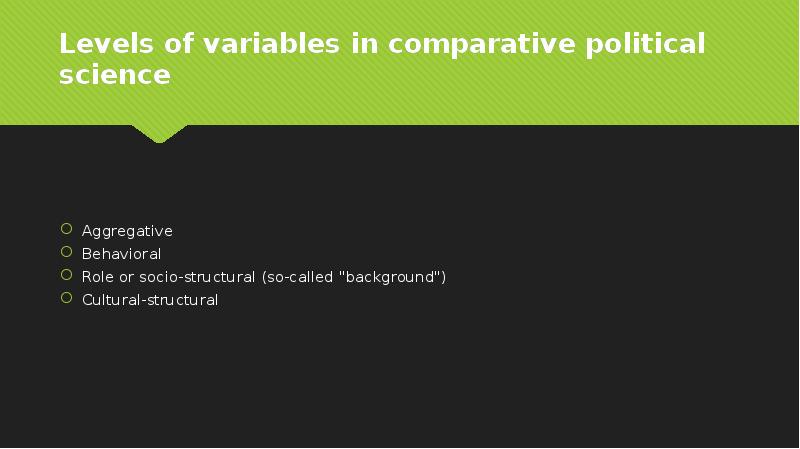Types and levels of comparative analysis in political science презентация
Содержание
- 2. Plan Types of comparative analysis: "case-study" comparison, regional comparison, global comparison. Comparison of
- 3. Case Study A case study may be understood as the intensive
- 4. Case Study
- 5. Regional Comparison Area Studies Cross-Regional Comparisons
- 6. Global Comparison Freedom House
- 7. Comparing Many Cases (large-n comparisons) Comparison of many countries, usually based
- 8. Comparing Many Cases (large-n comparisons) Information about countries must be both
- 9. Comparing Few Cases (small-n comparisons) Comparison of a few countries, usually
- 10. Comparing Few Cases (small-n comparisons) Small-n studies can include qualitative evidence
- 11. Quotes of the great The simplest and most obvious modes of
- 12. Method of Agreement If a phenomenon occurs in two or more
- 13. Method of Difference If two or more situations are similar, but
- 14. Most Similar Systems Design (MSSD) Deals with too few cases to
- 15. With each additional explanatory variable (V) the number of cases (n)
- 16. Most Different Systems Design (MDSD) Belongs to the category of statistical
- 17. Levels of variables in comparative political science Aggregative Behavioral Role or
- 18. Role or socio-structural (so-called "background") variables Social structural variables claim explanatory
- 19. Cultural-structural variables Cultural structural variables claim explanatory power for the
- 20. Скачать презентацию



















Слайды и текст этой презентации
Скачать презентацию на тему Types and levels of comparative analysis in political science можно ниже:
Похожие презентации





























